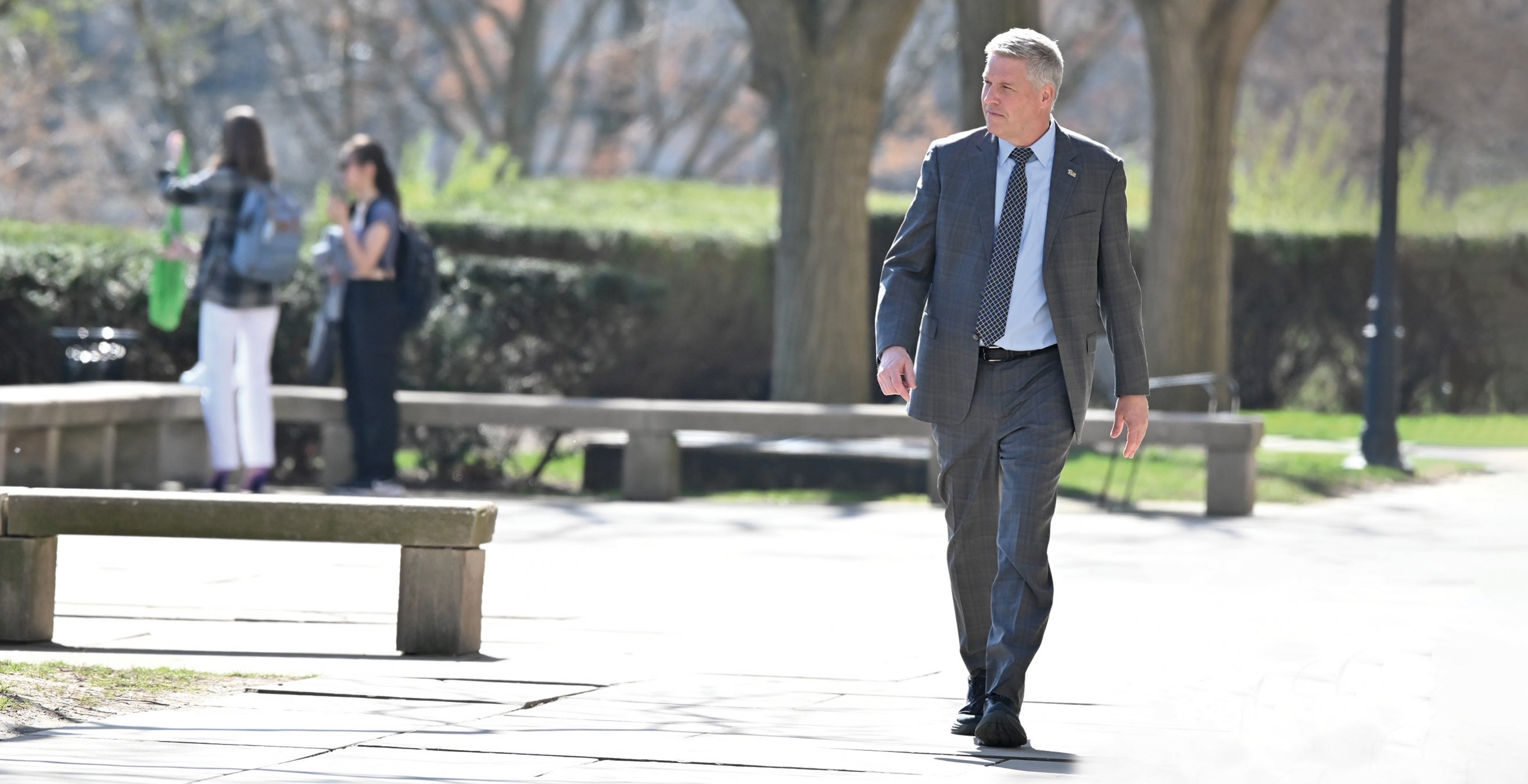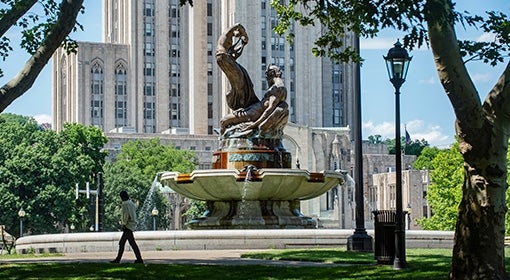Among morning commuters on Fifth Avenue, he’s a lone, tall man in a suit and tie walking west toward the Cathedral of Learning. He never wears headphones and rarely has a phone in his hand, unlike those around him — including me.
When I spot him on my trips to campus, I’m always struck by how present and focused he seems, even as traffic clamors around him. Chancellor Patrick Gallagher is ready to work.
“It keeps me in touch with the heartbeat of campus,” he explains when I ask him about his walk to and from the Chancellor’s Residence on Devonshire Street to his first-floor office in the Cathedral. “One of the nice things about being part of an urban campus is that so many of us are all out together. Whether it’s walking down Forbes to get a sandwich or catching a bus — it’s a shared experience.”
This summer, he’ll take this walk as chancellor for the last time before moving into a faculty position in the University of Pittsburgh’s Department of Physics and Astronomy. Teaching may be different from his current job, but addressing a crowd and fielding tough questions will be familiar. Though Pitt’s 18th chancellor has spent the past nine years in the spotlight, some of his most impactful work has happened offstage.
“A university is a community of people held together by a shared dedication to learning and pushing the boundaries of knowledge,” Gallagher says. “It’s mission driven. For me, that means focusing on why what we do matters. It centers you immediately on the students we educate, on the beneficiaries of the research and scholarship we do. It centers you on tackling really hard challenges — not because they are hard, but because they are important.”
Gallagher and Pitt have many important things to be proud of over the past decade. Some highlights include:
- Pitt ranks among the nation’s top universities in National Institutes of Health funding, and its researchers and innovators are responsible for more than 83 spinoff companies over the past five years.
- Pitt’s annual economic impact contributes an estimated $5.2 billion to Pennsylvania’s economy.
- On all five campuses, growth and renewal have led to the completion of more than 1,498 construction and renovation projects in nine years.
- Diversity and equity efforts have led to a 10 percentage-point increase in the minority student population and a 58% increase in diversity among employees.
- First-year applications to the Pittsburgh campus rose 92% between the fall semesters of 2013 and 2022. Among the Pittsburgh campus class of 2021, 97% of bachelor’s degree recipients were working or advancing their education six months after graduation, a record high placement rate.
These strides are possible because of the work, expertise and passion of thousands of people, including a forward-thinking chancellor who championed the best of Pitt. To celebrate his service, I want to highlight some of the people, programs and initiatives that thrived under — and, in part, because of — his leadership.
As Pitt Magazine’s editor-in-chief, I’ve interviewed Gallagher often (not to mention the occasional shared wave while walking in the mornings), so I know what little interest he has in talking about himself.
“It’s partly my personality,” he tells me. “But, even more, it comes with the position of chancellor. You can never forget that the magic happening at the University is happening because other people do it.”
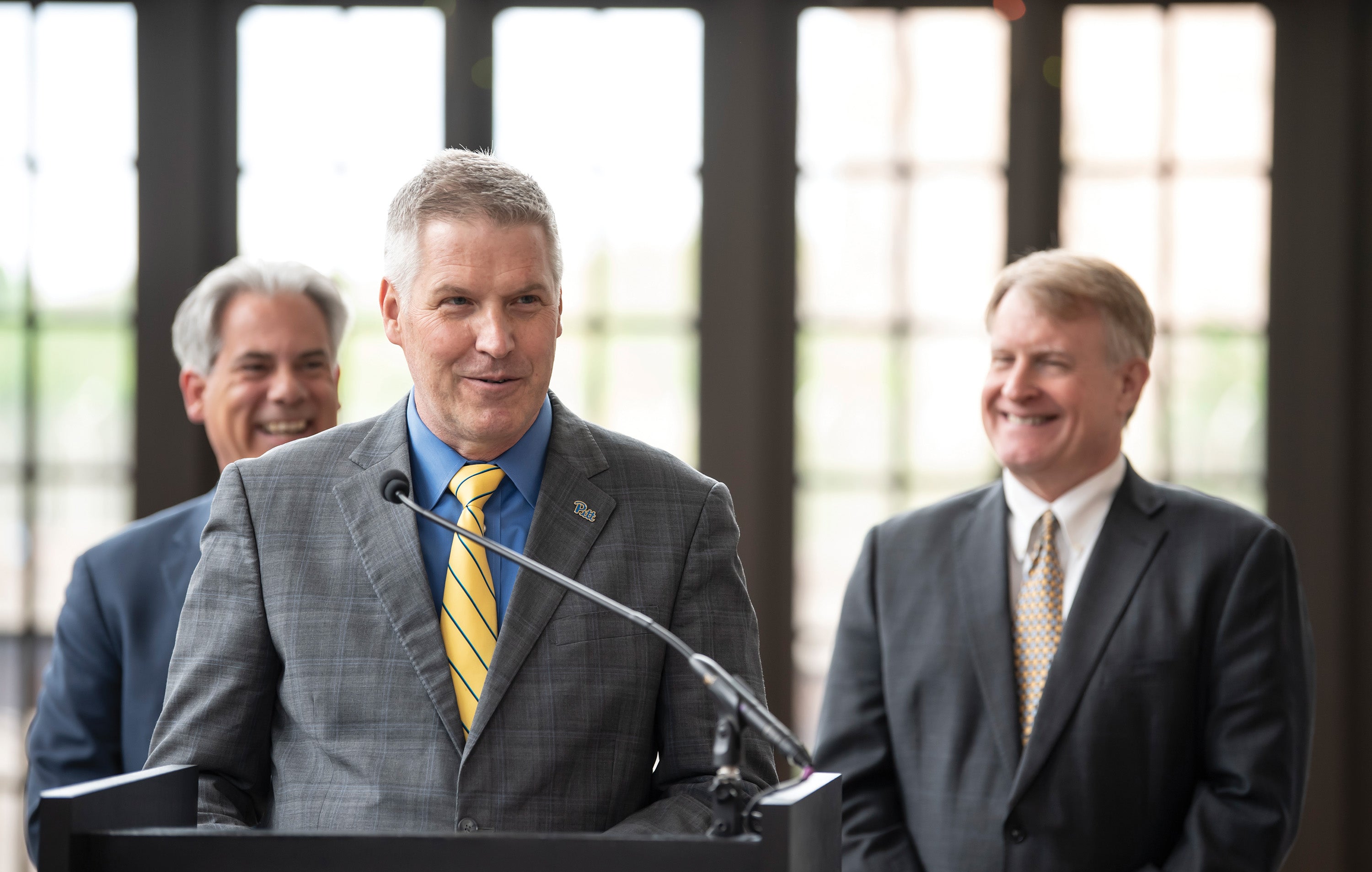
Lifesaving research
The call is like so many others Joshua Finney answers as an emergency medical technician: an overdose — likely opioid-related. The patient is a dishwasher at a local restaurant in Jefferson County, Ohio, and by the time Finney and his partner get him into the ambulance, the man is conscious.
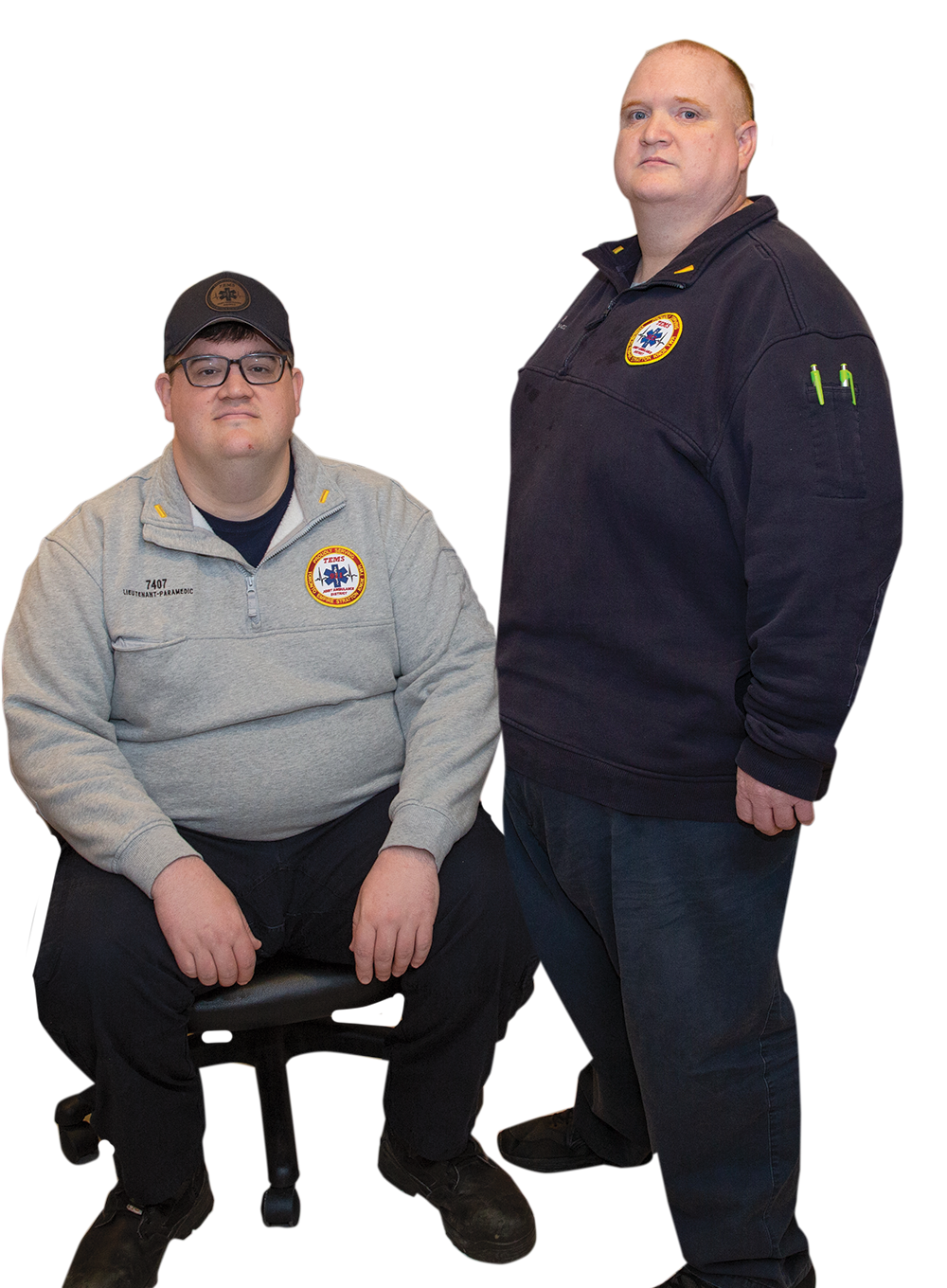 “I just talked to him on the way to the hospital,” Finney recalls. “He said he wouldn’t mind being a chef and going to culinary school. I told him it wasn’t too late.”
“I just talked to him on the way to the hospital,” Finney recalls. “He said he wouldn’t mind being a chef and going to culinary school. I told him it wasn’t too late.”
A year later, the EMT bumps into the man at the grocery store. He tells Finney he remembers their conversation and is pursuing auto mechanics, after culinary school wasn’t the right fit. The man says he has a job and a life he is proud of.
“It was awesome,” says Finney. “It was just a 10-minute drive to the hospital that helped him rethink things.”
That call came in 12 years ago, but Finney still thinks about it while working in Jefferson County as an outreach coordinator for SCOPE, or Strategies to Coordinate Overdose Prevention Efforts. This Pitt initiative is built on research showing a coordinated community response can make a difference in a complex crisis like the opioid epidemic.
Through SCOPE, Finney, his colleague Jeff Cline and other program staff throughout Pennsylvania and Ohio train first responders, including firefighters and EMTs, on how to effectively care for individuals and communities dealing with substance use disorder. They offer training on what causes addiction and how to connect individuals and their loved ones with local recovery care. They provide naloxone leave-behind kits so friends and families can quickly revive those experiencing an opioid overdose, and the initiative helps track and analyze local recovery rate data.
SCOPE is part of a groundbreaking Pitt organization combating the opioid crisis — the School of Pharmacy’s Program Evaluation and Research Unit (PERU).
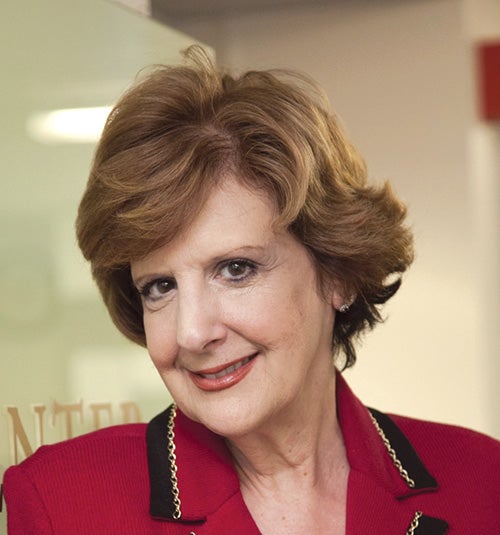 Using expertise from disciplines across the University — including pharmacy, public health and social work — PERU works with individuals and communities to better understand, prevent and treat substance use disorder, educate health care-related organizations, and compile and manage data.
Using expertise from disciplines across the University — including pharmacy, public health and social work — PERU works with individuals and communities to better understand, prevent and treat substance use disorder, educate health care-related organizations, and compile and manage data.
“The days of heuristic findings for the sake of heuristic findings are gone,” says Janice Pringle, founder and director of PERU and professor of pharmacy and therapeutics. “When you uncover new knowledge, it’s best to find a way to apply it. Our work is about creating all the ingredients for us to systematically approach this issue at a community level. When that happens, then you can begin to make a difference.”
In an article recently published by the Journal of Studies on Alcohol and Drugs, Pringle notes that the monthly opioid overdose death rate fell by 30% in Pennsylvania counties that implemented a cost-effective, community-led strategy provided by PERU.
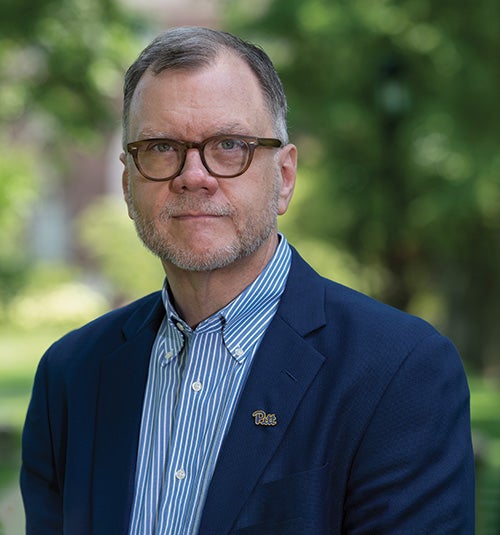 That’s 1,818 opioid-related deaths prevented over just two years.
That’s 1,818 opioid-related deaths prevented over just two years.
PERU is just one of the multidisciplinary, solution-focused approaches to research that have thrived at Pitt, alongside basic bench science, under Gallagher.
He created the position of senior vice chancellor for research, filled by Rob A. Rutenbar. One of the aims was to facilitate vital research and collaboration between 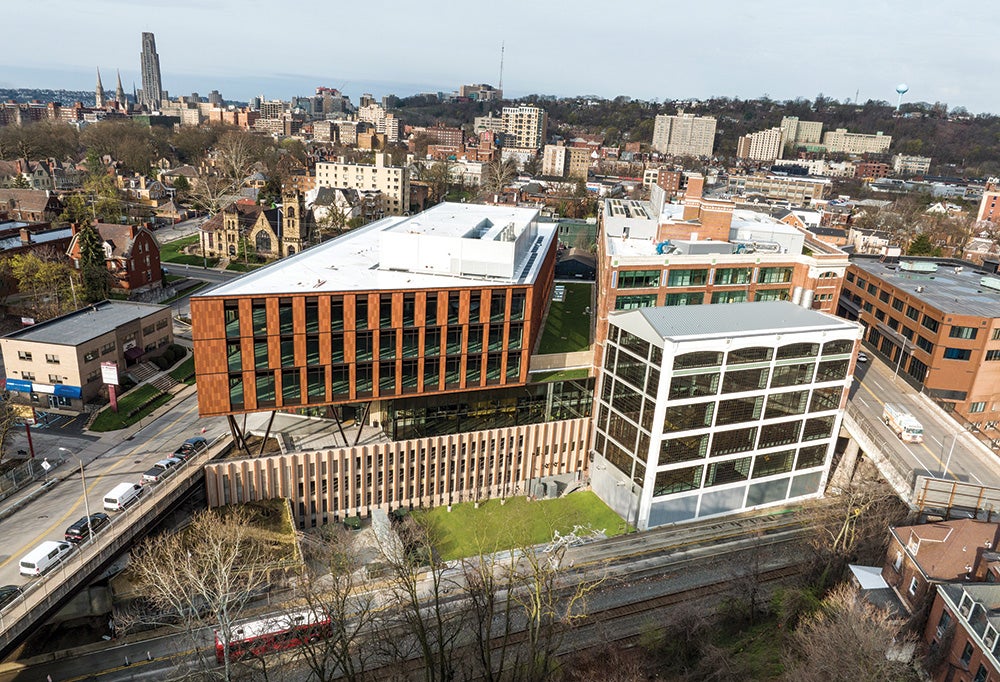 schools and specialties. Today, Pitt is recognized as one of the top research universities in the nation, with more than $1 billion in research expenditures in the last fiscal year.
schools and specialties. Today, Pitt is recognized as one of the top research universities in the nation, with more than $1 billion in research expenditures in the last fiscal year.
“What got us to this position is the way that the researchers and scholars at Pitt collaborate, and the way they bring in outside investments and talent,” Rutenbar says.
Gallagher has also championed moving research from an aha moment to a service or product available to the public. He promoted the Innovation Institute, which launched in 2013, and opened the Big Idea Center in 2018 so students, faculty and others can turn ideas into products and businesses. At The Assembly, an off-campus life sciences facility that opened in 2022, cancer researchers and biomedical innovators come together to ensure that discoveries at Pitt can quickly benefit patients.
“This is why we’re here as a university,” says Gallagher. “Negotiating the present, creating a just and vibrant future, and scaling up to achieve a worldwide positive impact.”
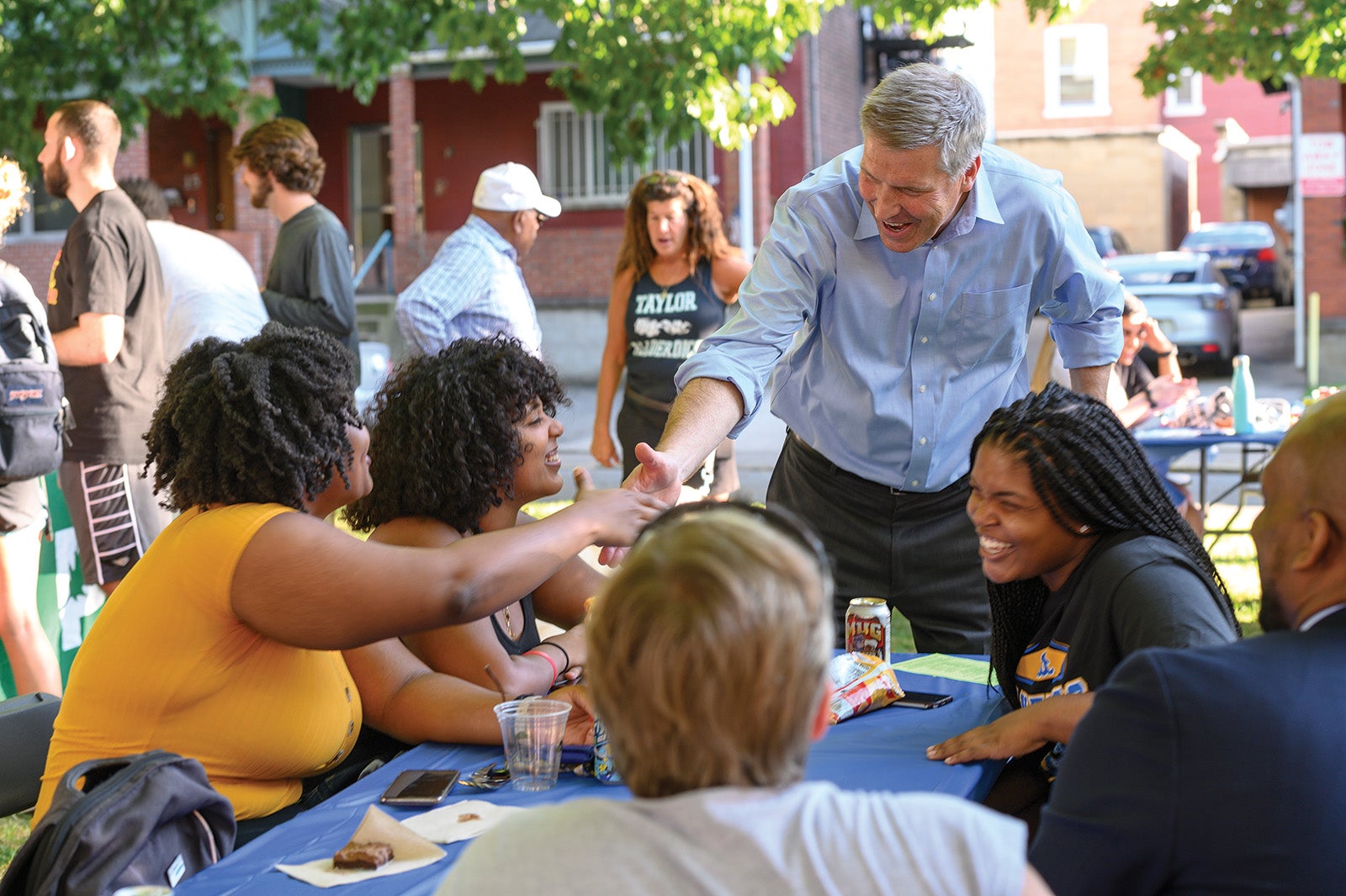
Good neighbor
Wearing safety goggles and looks of concentration, two boys lean over a tub filled with a large, flat rock. One child holds a small pickax, the other a chisel-like instrument. With a teacher’s help, they carefully pound the stone until — thunk — finally, it splits in two. Their eyes widen as the teacher opens the two halves to reveal what they all hoped to see: a fossil.
This is STEAM Saturday in Pittsburgh’s Hill District neighborhood at the Community Engagement Center (CEC). The first center opened in Homewood in 2018, soon followed by the Hill District CEC, to provide residents with access to Pitt resources and programming geared toward priorities they have outlined.
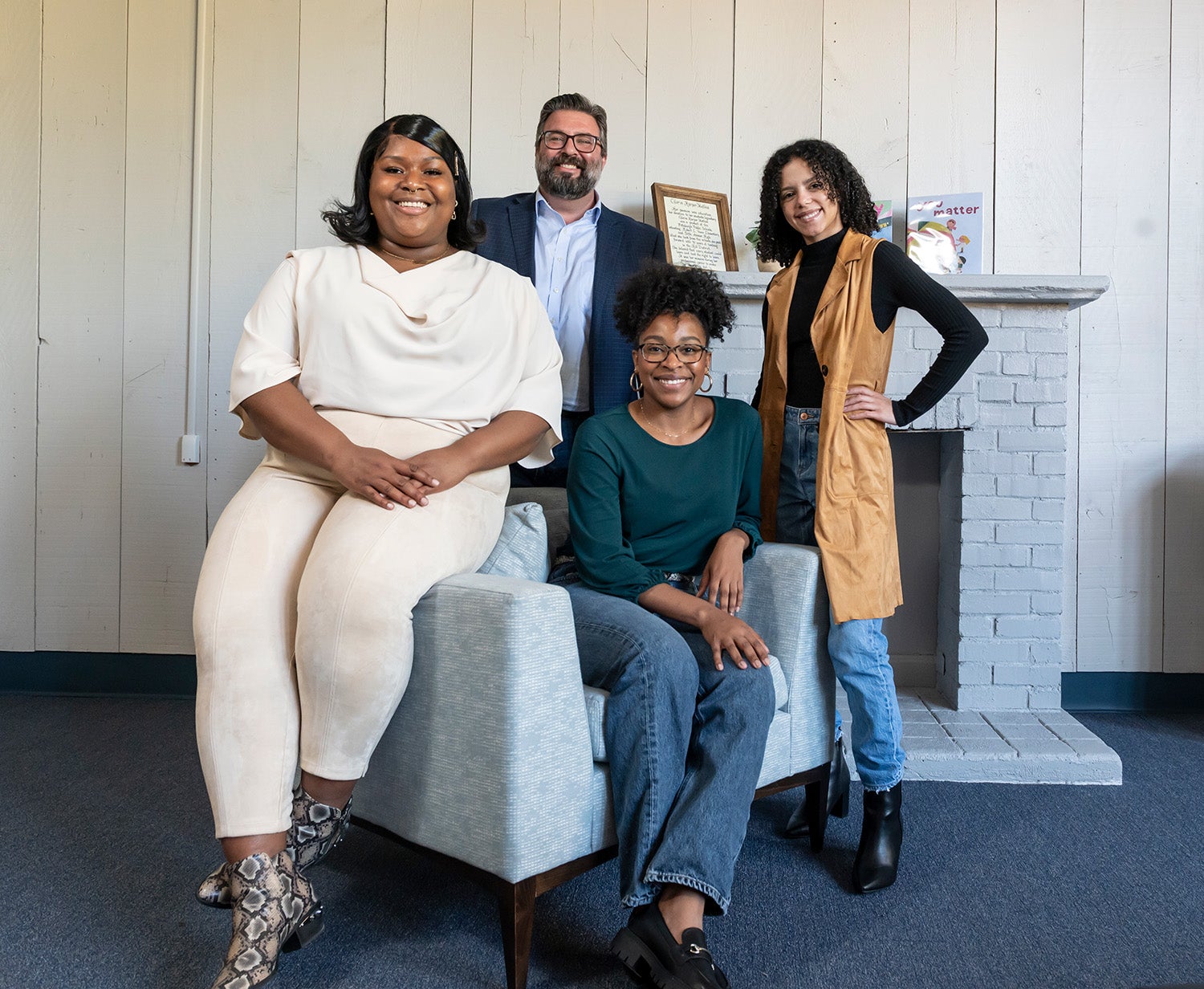 “Here on the Hill, we have a strong emphasis on digital inclusion and STEAM [science, technology, engineering, art and math] education, because that was the ask from the community,” says Marlo Hall, a CEC outreach coordinator. “Folks here are aware these are industries on the rise that have a lot of opportunities, and they want to be prepared for that.”
“Here on the Hill, we have a strong emphasis on digital inclusion and STEAM [science, technology, engineering, art and math] education, because that was the ask from the community,” says Marlo Hall, a CEC outreach coordinator. “Folks here are aware these are industries on the rise that have a lot of opportunities, and they want to be prepared for that.”
To answer the call, the Hill District CEC presents a range of free programming linked to various academic departments at Pitt, including career fairs, digital literacy courses for adults, technology training and biology courses for high school students and STEAM Saturdays for third through eighth graders. This program, which Hall coordinates, includes classes on coding, engineering, mathematics and biodiversity featuring hands-on lessons taught by Pitt faculty and students.
“The work at the CECs is breaking down the ivory tower mindset,” says Gallagher. “We’re not a monastery that’s separate from the world. We are a part of it. And a university makes its biggest impact when it’s fully engaged in the community it’s supporting.”
The CECs are a part of Pitt’s Neighborhood Commitments, led by the Office of Engagement and Community Affairs, which strengthen the community and University by combining Pitt’s assets and resources with neighbors’ agendas and wisdom. Pitt’s Neighborhood Commitments are long-term pledges of collaboration, staffing and infrastructure that facilitate mutually beneficial activities and programs. This approach bolsters the University’s continued commitment, as an anchor institution, to progress and partnership in the region and its surrounding communities.
In 2021, the most recent year reviewed, Pitt’s annual economic impact to the state hit $5.2 billion, growing 41% since 2014.
That $5.2 billion includes jobs supported and sustained, taxes generated and the value of donated time and charitable giving. It doesn’t, however, include the impact on careers, livelihoods and community-driven progress made possible by commitments like the CECs.
We’re not a monastery that’s separate from the world. We are a part of it. And a university makes its biggest impact when it’s fully engaged in the community it’s supporting.
Patrick Gallagher
Hall grew up in the Hill District and now, as a Pitt employee, is earning a degree in media and professional communications. She’s gratified by her work, especially when she gets to see children fall in love with STEAM.
“So often, the narrative between our communities and universities is one where universities take, take, take,” she says. “We’re trying to move forward in a better direction, in a way that says, ‘I’m not working on top of you. I’m not telling you what’s best for you. I’m asking you how we can do this the right way.’ And Pitt is listening.”
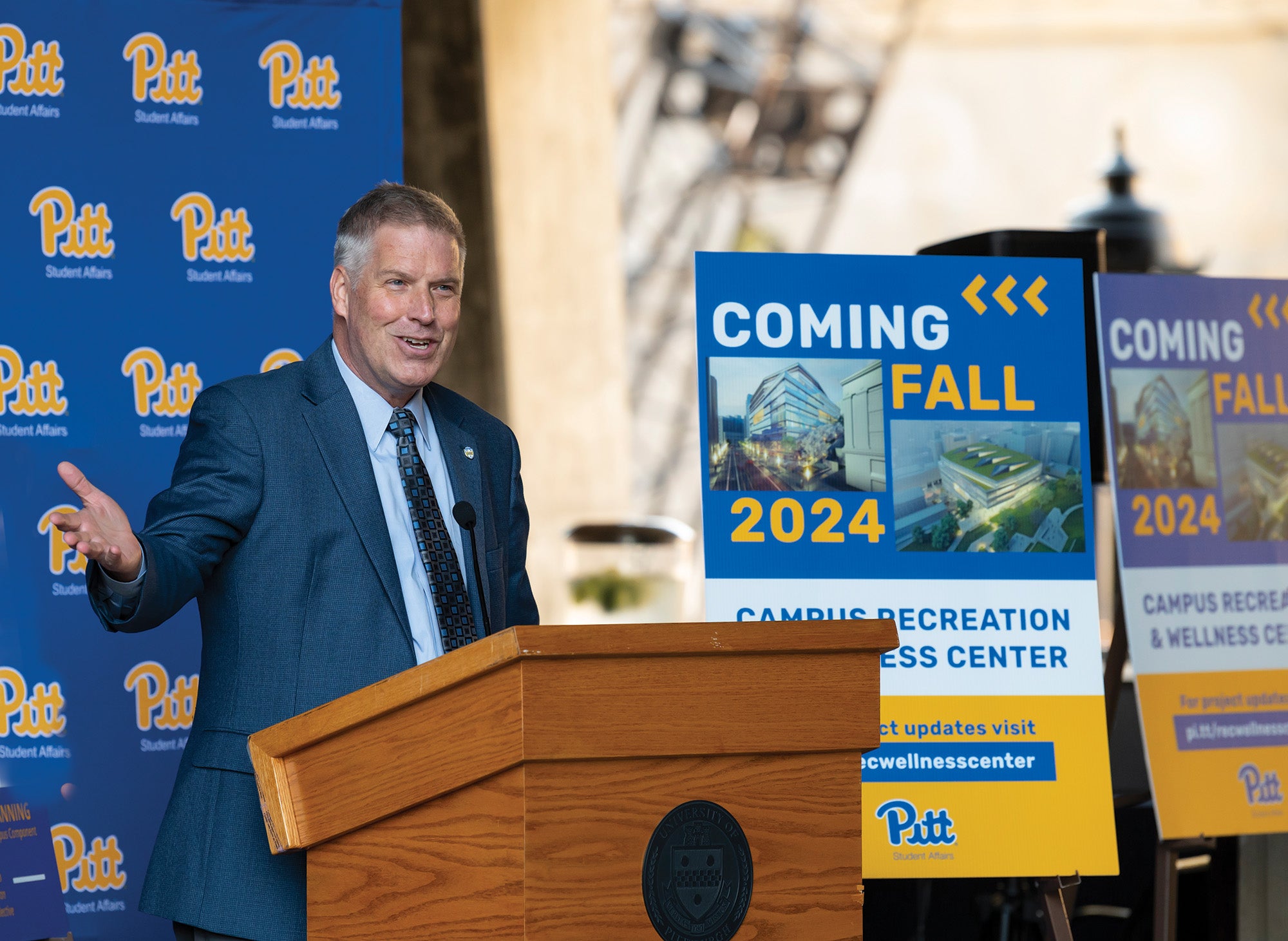
Under construction
Each time James Callahan returns to campus, it looks a little different.
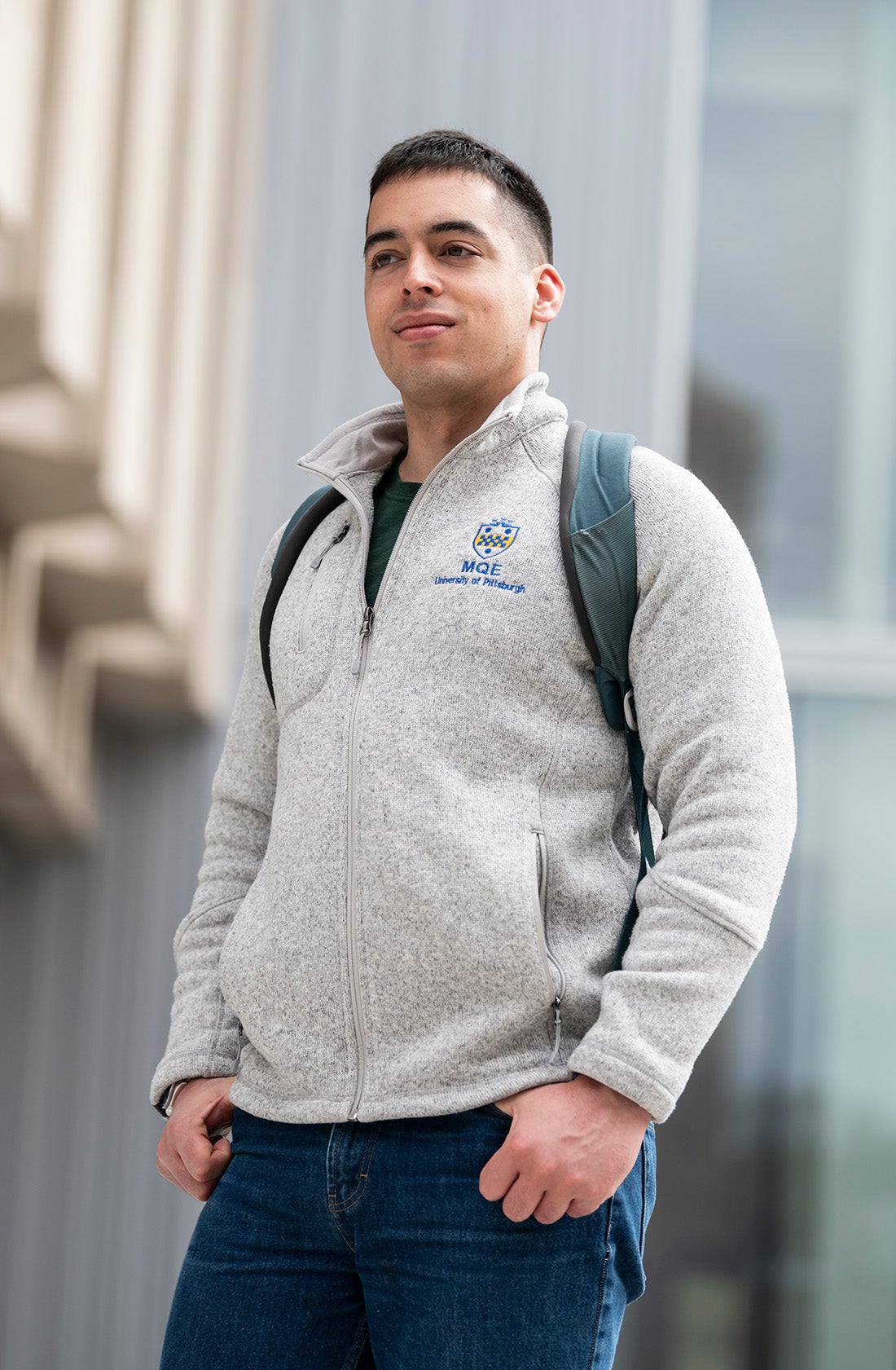 A Philadelphia native, he enrolled at Pitt in 2017 sight-unseen — a risk, sure, but one that paid off. Right away, he loved the busy urban campus and spent his first year immersing himself in his economics major. Then he enlisted in the Air National Guard, which required him to leave campus for semesters at a time — first to train, then to deploy overseas. His friends at Pitt kept him in the loop about new construction he would see when he got back.
A Philadelphia native, he enrolled at Pitt in 2017 sight-unseen — a risk, sure, but one that paid off. Right away, he loved the busy urban campus and spent his first year immersing himself in his economics major. Then he enlisted in the Air National Guard, which required him to leave campus for semesters at a time — first to train, then to deploy overseas. His friends at Pitt kept him in the loop about new construction he would see when he got back.
“It was kind of a constant conversation about what they’re doing next,” he says. “Even now, there are so many projects going on at the same time.”
Callahan (A&S ’22, ’23G) graduated with a bachelor’s degree in economics and a minor in Persian languages before re-enrolling at Pitt to earn a master’s in quantitative economics. He graduated this spring and, looking back on his years at the University, can see how much campus has evolved.
In his first years, he spent most of his study time on the ground floor of “Cathy,” but now favors the fourth floor of Hillman Library.
“Ever since they renovated it, it’s been a great place to hang out,” he says. “The personal study rooms are great, and I just like how the design is thoughtfully laid out.” The changes, he says, feel like they are in response to student needs.
“Like any activity, where you do it and how easy it is to get it done can be enhanced by the facilities and tools that we provide,” says Gallagher. “So, I view Pitt’s development as a way of lifting and supporting our people. This is a remarkable community we have at Pitt, and we should have remarkable spaces so that our people can reach their full potential.”
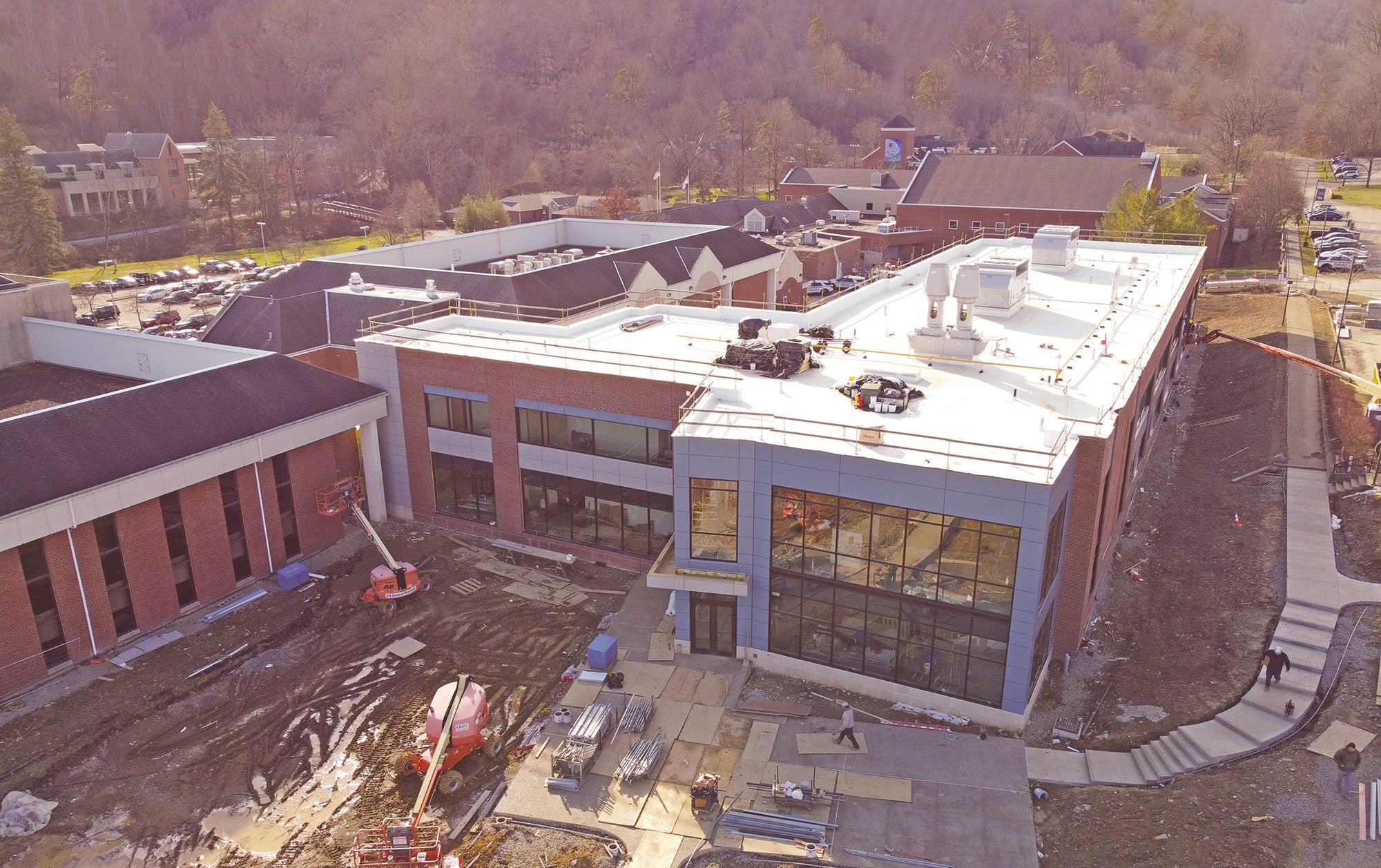
In nine years, more than 1,498 construction and renovation projects have been completed across all campuses, including the award-winning streetscaping of Bigelow Boulevard between Fifth and Forbes avenues, updates to Wesley W. Posvar Hall, and a new two-story, 32,085-square-foot Life Sciences Building at Pitt-Greensburg.
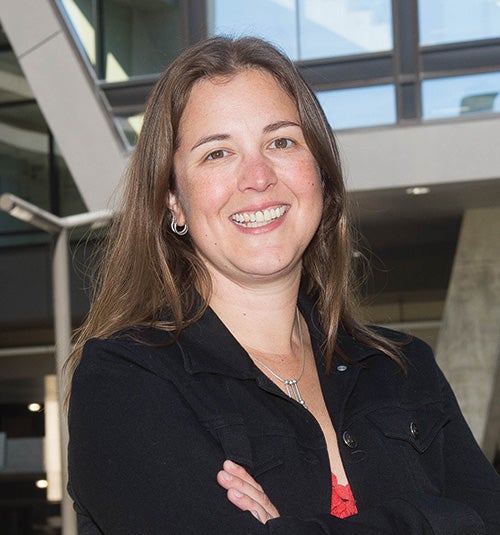 Even more is in progress. Alan Magee Scaife Hall, the home of the University’s School of Medicine, is undergoing extensive modernization and a new west wing addition while work has begun down the street on the state-of-the-art Campus Recreation and Wellness Center.
Even more is in progress. Alan Magee Scaife Hall, the home of the University’s School of Medicine, is undergoing extensive modernization and a new west wing addition while work has begun down the street on the state-of-the-art Campus Recreation and Wellness Center.
These projects are moving forward with careful consideration not just for the campus and surrounding communities, but also for the planet. In 2018, the Pitt Sustainability Plan was launched, outlining ambitious goals, including a commitment to cut carbon emissions to net zero by 2037. With help from the Office of Sustainability, led by Executive Director Aurora Sharrard, Pitt pursues LEED certification (the world’s leading green building certification) on all new building projects. To date, Pitt has 17 LEED certified spaces covering more than 1.3 million square feet.
“Chancellor Gallagher gave sustainability at Pitt the opportunity to grow and innovate at scale,” says Sharrard. “He removed restrictions and empowered the University’s sustainability community and collaborators to create strategies for positive change that are helping Pitt’s systems responsively evolve for environmental and social benefit.”
Inclusive advancement
Growing up in the West African nation of Benin, Onome Oghifobibi witnessed tragic health outcomes linked to poverty and a lack of access to care. The area of the country he called home is oil-rich, a major contributor to the nation’s wealth, but many people left out of this economic boon still suffer from preventable illnesses and deaths — especially mothers, babies and young children.
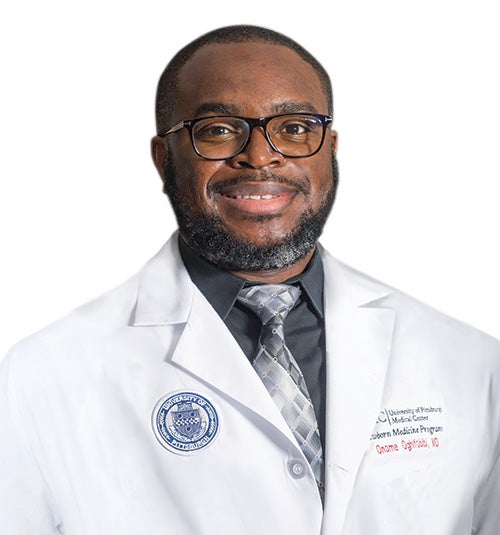 “These experiences influenced my decision to study medicine, to reach out to these individuals and the nation as a whole, and to contribute to the fight against ignorance and disease,” says Oghifobibi.
“These experiences influenced my decision to study medicine, to reach out to these individuals and the nation as a whole, and to contribute to the fight against ignorance and disease,” says Oghifobibi.
He earned a medical degree at the University of Benin and a Master of Science in health management at Oxford Brookes University in the United Kingdom before training in pediatrics and neonatal intensive care in London. Then, in 2015, he arrived at the University of Pittsburgh’s School of Medicine for a pediatric residency.
As he cared for some of Western Pennsylvania’s most vulnerable infants, he again noticed health disparities, particularly between white and Black or brown people. He wanted to help address the problem.
Today, that’s what he does as a UPMC physician and Pitt assistant professor of pediatrics. He also works with the Allegheny County Health Department to help combat maternal and infant mortality in Pittsburgh’s Black and brown communities.
His hiring and work have been made possible, in part, by a University-wide initiative intended to identify, recruit, hire, retain and promote Pitt faculty whose work tackles vital issues of equity and equality in health care. Launched by Provost and Senior Vice Chancellor Ann E. Cudd and Senior Vice Chancellor for the Health Sciences Anantha Shekhar, the Race and Social Determinants of Equity, Health and Well-being Cluster Hire and Retention Initiative is one of the largest of its kind in any institution in the country.
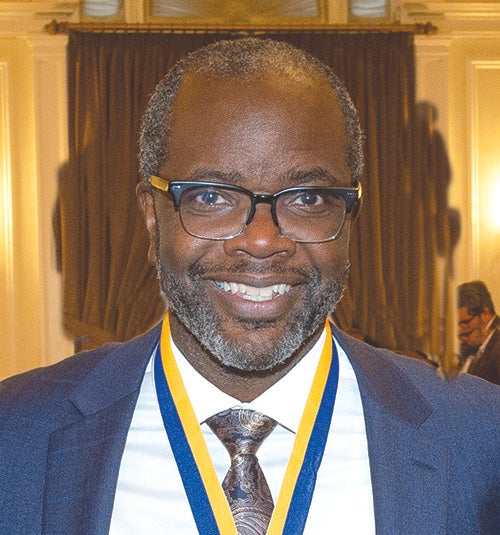 “It’s about much more than just hiring faculty,” says John M. Wallace Jr., vice provost for faculty diversity and development and co-chair of the initiative alongside Paula K. Davis, associate vice chancellor for diversity, equity and inclusion in the health sciences. “When we’re interested in something like quantum computing, we recruit faculty from that field. The University has committed to addressing race and social problems, so we’re building an interdisciplinary team of folks across the University to address some of these challenges.”
“It’s about much more than just hiring faculty,” says John M. Wallace Jr., vice provost for faculty diversity and development and co-chair of the initiative alongside Paula K. Davis, associate vice chancellor for diversity, equity and inclusion in the health sciences. “When we’re interested in something like quantum computing, we recruit faculty from that field. The University has committed to addressing race and social problems, so we’re building an interdisciplinary team of folks across the University to address some of these challenges.”
The initiative has already brought on nearly 40 faculty members and works to retain new hires through connections and support, including social gatherings, a lecture series and “collaboratories” where faculty work together on key subjects.
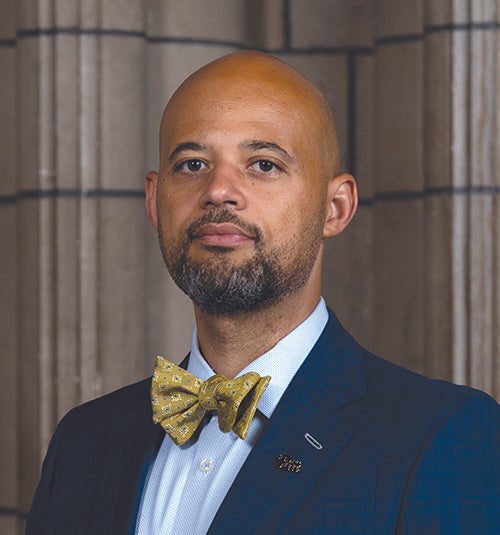 “While we know our effort to attract new faculty is having an impact, we must be persistent and intentional in our efforts to attract, retain and develop diverse community members. This is an area that requires our full attention and priority,” says Clyde Wilson Pickett, vice chancellor for equity, diversity, and inclusion and chief diversity officer. Pickett heads an office created in 2015 to advance the University’s efforts to embed diversity as a core tenet and ensure Pitt is a welcoming and equitable place.
“While we know our effort to attract new faculty is having an impact, we must be persistent and intentional in our efforts to attract, retain and develop diverse community members. This is an area that requires our full attention and priority,” says Clyde Wilson Pickett, vice chancellor for equity, diversity, and inclusion and chief diversity officer. Pickett heads an office created in 2015 to advance the University’s efforts to embed diversity as a core tenet and ensure Pitt is a welcoming and equitable place.
“Racial inequality and injustice run counter to the very mission of a university,” Gallagher says. “To truly thrive, a university must be an open, just and supportive community — a space that, by design, fosters the pursuit of learning, teaching and the creation of new knowledge.”
While there is still room for growth, progress has been made. Over the past nine years, there’s been a 10 percentage-point increase — from 17% to 27% — in Pitt’s minority student population. Diversity among employees has increased 58%.
Still, “we must do better,” says Gallagher.
With the work of people like Oghifobibi, Wallace and Pickett, Pitt is on track to do so.
To truly thrive, a university must be an open, just and supportive community — a space that, by design, fosters the pursuit of learning, teaching and the creation of new knowledge.
Patrick Gallagher
Scholarly achievements
When she applied to Panthers Forward, Tanisha Long (A&S ’22) didn’t expect to get in. “I was the first person in my family to go to college,” she says. “But I wasn’t the first one to graduate.”
Long, the oldest of seven children, first enrolled in classes at the Pittsburgh campus in 2008 with plans to become a lawyer — but life got in the way. She struggled with a then-undiagnosed learning disorder and with the 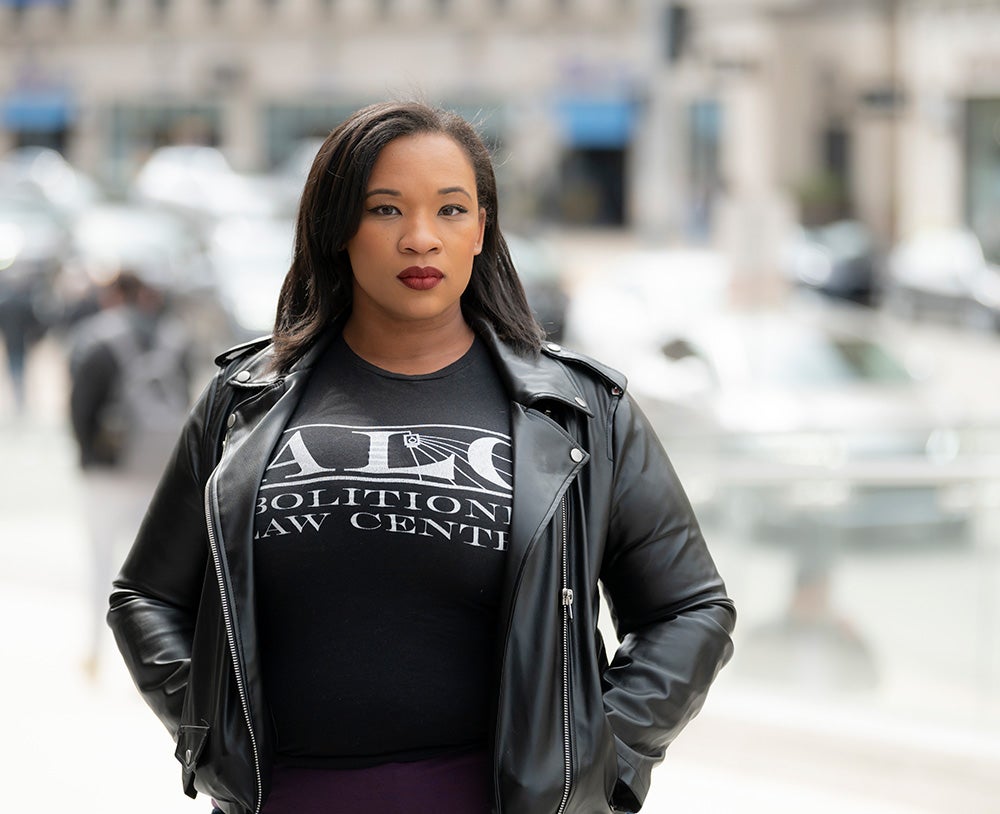 effects of several family crises. And then there was the cost of college. She took out loans and worked part time. Eventually, she made the difficult choice to leave, intending to return to school as soon as she could.
effects of several family crises. And then there was the cost of college. She took out loans and worked part time. Eventually, she made the difficult choice to leave, intending to return to school as soon as she could.
Over the next decade, Long worked full time and supported her siblings as they pursued higher education. She tried returning to Pitt several times but couldn’t make it work. Finally, with financial support from her then-employer, Long enrolled as a full-time student in 2020.
The years had changed her. She was more determined to turn her college degree into a means of bringing about positive change in her community. Even as she filled her days with studying and work, she became an outspoken advocate for civil rights and a founder of Black Lives Matter Pittsburgh.
Still, the financial impact of her education was significant. That’s why, even though she was sure she wouldn’t be a match, she applied to Panthers Forward.
An innovative program unique to the University of Pittsburgh, Panthers Forward was introduced by Gallagher in 2018 to help address the national rise in student loan debt. Undergraduate participants receive up to $5,000 in direct federal student loan relief and are offered mentorships and programming to help them prepare for a successful life after college. After graduating, participants are encouraged — but not required — to pay it forward by donating to the program or volunteering to help current students.
Panthers Forward has provided nearly $3.75 million in student debt relief or loan forgiveness. It’s one of many ways Pitt has worked to support student success and make college more accessible during Gallagher’s tenure. Over the past nine years, there’s been a 91% increase in the number of students receiving institutional aid from the University. Initiatives like Pitt Success Pell Grant Match Program, a financial aid program launched in 2019, and Pittsburgh Public Scholars, which guarantees Pitt admission to top students in Pittsburgh Public Schools, are opening doors for more students.
“Higher education is both an individual and a public benefit,” says Gallagher. “If we have the opportunity to make it more accessible, we should.”
With help from Panthers Forward, a constellation of encouraging faculty members and a lot of hard work, Long graduated in 2022. She is now a community organizer at the Abolitionist Law Center in Pittsburgh and runs her own nonprofit, RE Visions, which provides mentorship to young students of color. This year, she made her first donation back to Panthers Forward.
“I’m someone who never, ever would have made it this far if not for the reach-back of other people,” she says. “For me, there’s a pride in being in Panthers Forward, because I’m with a group of people who have a service-oriented mindset.”
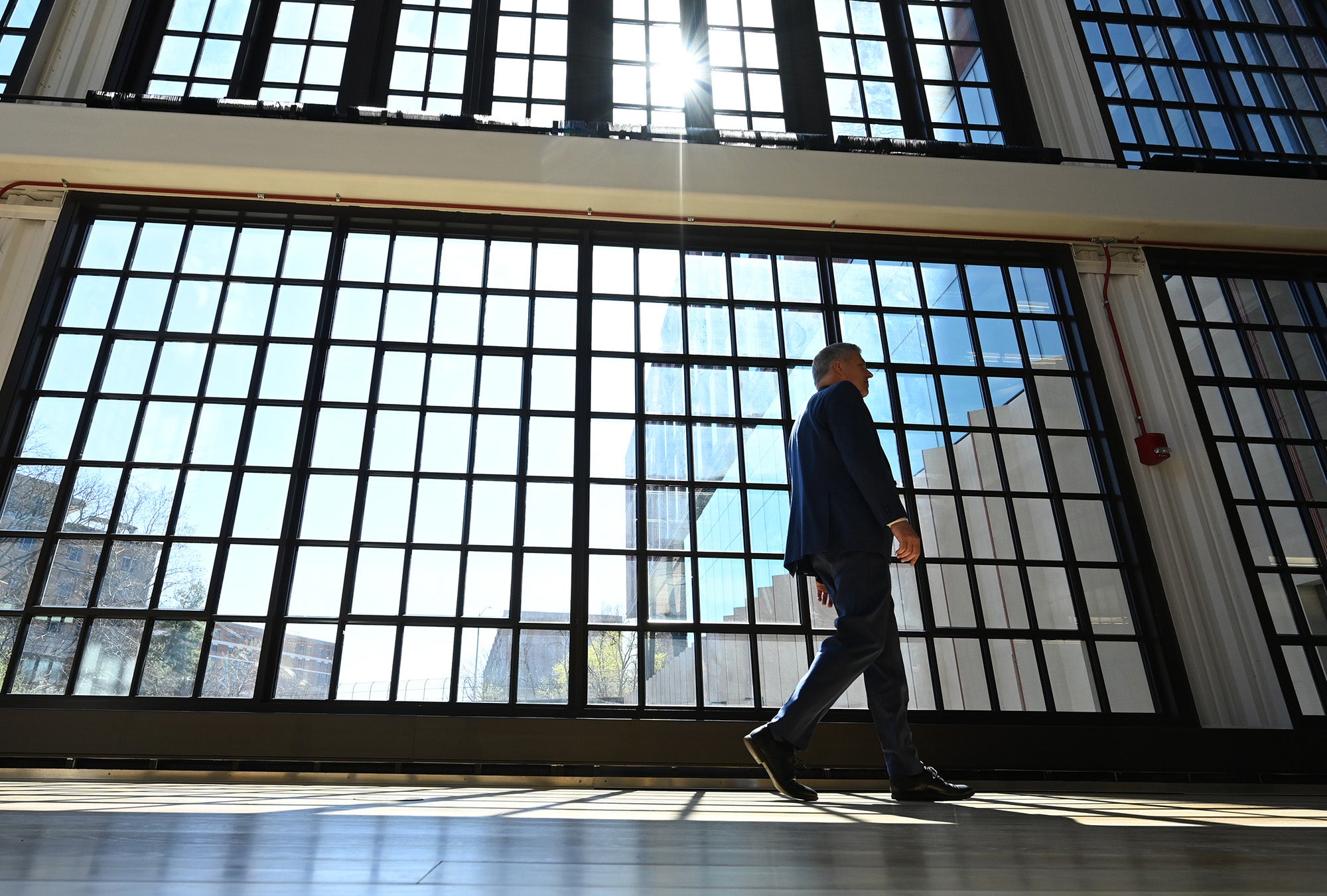
Forging ahead
Gallagher, who came to Pitt in 2014 from the National Institute of Standards and Technology in Washington, D.C., will take some time off before starting in the Kenneth P. Dietrich School of Arts and Sciences as a professor of physics, the subject for which he earned a PhD at Pitt in 1991. I look forward to catching glimpses of him on campus when he returns, a lone, tall man, this time on his way to class.
He’s called the new role a “dream job” and says he’s looked forward to returning to the classroom as a teacher for many years. “I’m very excited,” he says. “I’m secretly reading physics books again, but I’m trying to temper my enthusiasm a little bit — you know — stick to my day job.”
As Gallagher prepares for his next chapter, progress remains in progress at Pitt. Beginning in July, for the first time in the University’s 236-year history, a woman will serve as chancellor.
“Joan T.A. Gabel is the right leader to shape the University of Pittsburgh’s legacy and future,” he said in April. “I am confident that, under her guidance, Pitt’s brightest days lie ahead.”
This story was published on May 9, 2023. It is part of Pitt Magazine's Spring 2023 issue.

